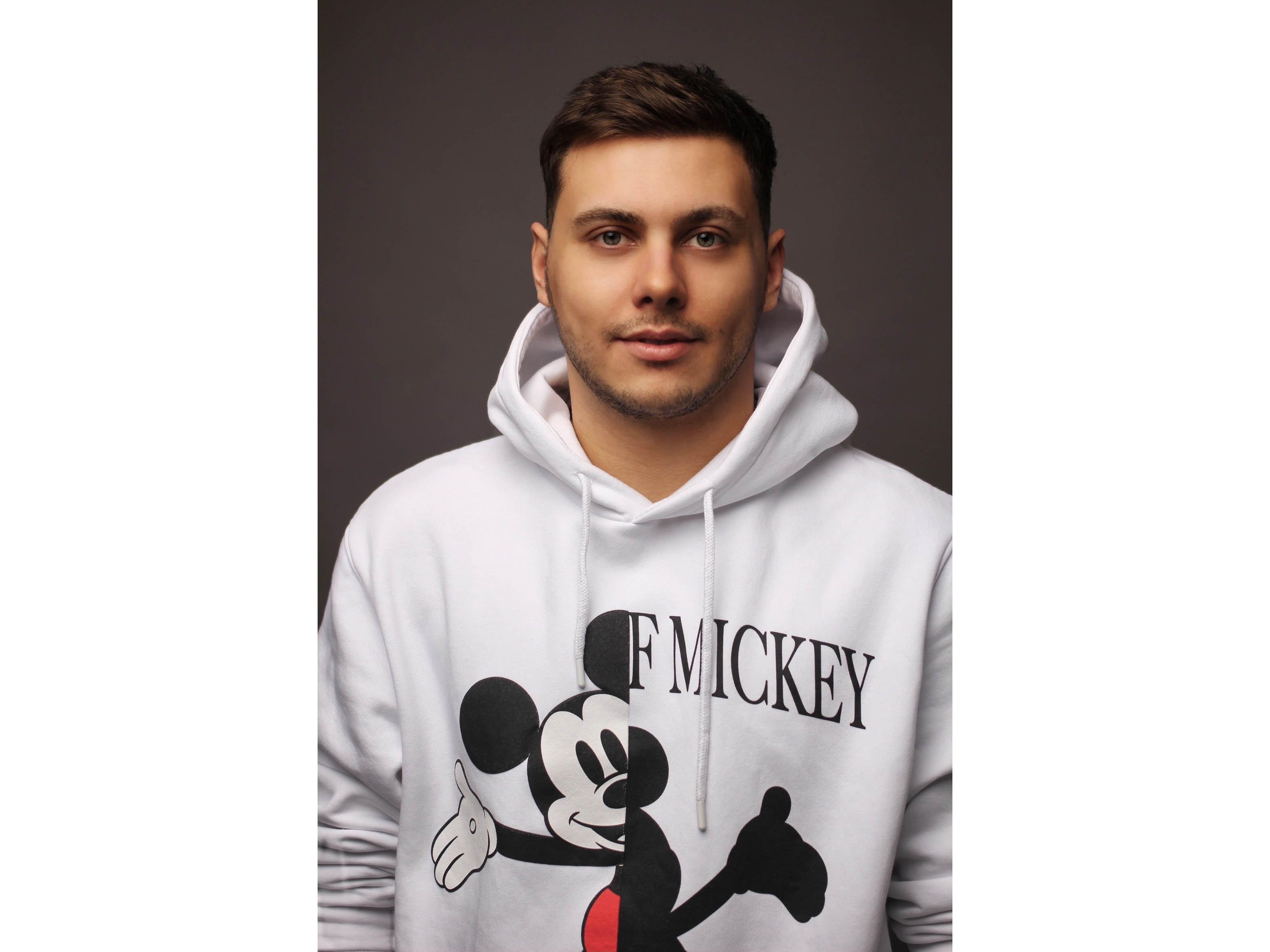News - Digital/Tech
Five Key Influencer Marketing Trends for 2024, as per Experts' Predictions
January 15, 2024
.jpg) Advertisement
AdvertisementFirst: influencer marketing is not going anywhere, it’s only getting stronger and bigger.
In 2023, the industry reached $21—1 billion from $16.4 billion in 2022. In 2024, it’s expected to grow even more.
Second: read further to get all the answers. The specialists, hailing from diverse backgrounds and with rich experience in digital marketing, offer their predictions and analyses, shedding light on the future of influencer marketing. Their perspectives provide a valuable guide for anyone looking to navigate this ever-changing landscape.
So, here are the top five influencer marketing trends that will be prevailing in 2024, the ones you need to consider to craft an unbeatable strategy for your brand.
Data-Driven, Hybrid Approach in Influencer Marketing
2024 is poised to witness a pivotal shift in the realm of influencer marketing campaigns, marked by a strategic, data-driven approach that emphasizes the importance of KPIs. This evolution reflects a deeper understanding of measuring campaign effectiveness, where success is quantified through precise metrics rather than mere visibility or engagement.
Nadia Bubennikova, Head of Agency at Famesters, gives a deeper understanding of this trend: “The forthcoming year is expected to see brands adopting a more systematic approach to their influencer marketing campaigns. This strategy will involve a heavy reliance on data to guide decisions and measure outcomes. By focusing on KPIs, brands can quantify the success of their campaigns in concrete terms, allowing for a more objective evaluation of their marketing efforts.
A significant development in influencer marketing is the increasing popularity of the hybrid model of influencer deals. This model presents an effective balance between performance-based CPA arrangements and fixed-fee deals. While CPA launches are attractive to brands due to their direct correlation with specific actions (like sales or sign-ups), fixed-fee deals provide influencers with a guaranteed income, irrespective of ad performance.
Hybrid deals typically involve a minimum fixed payment combined with a CPA component, incentivizing influencers to drive results while ensuring they are fairly compensated for their efforts. This approach has been particularly prevalent in gaming brand campaigns on platforms like Twitch, where ad integrations are coupled with real-time tracking features for both the influencer and their audience.
In 2024, the hybrid deal structure is expected to extend far beyond gaming products, encompassing sectors like fintech, trading platforms, subscription services, and e-commerce. This expansion signifies a broader application of the hybrid model, indicating its effectiveness and appeal across various industries. The anticipated boom in hybrid deals suggests a shift in how brands and influencers negotiate partnerships, focusing on mutual benefits and performance-driven outcomes.”
The trend towards a more refined, outcome-focused approach in influencer marketing is indicative of the industry's maturity. Brands are increasingly tailoring their measurement methods to align with specific campaign objectives, moving away from generic metrics to more targeted, goal-specific indicators. This shift towards a data-driven, goal-aligned strategy is expected to enhance the efficacy and accountability of influencer marketing campaigns, making them more impactful and measurable in 2024.
Shift from Celebrity to Authentic Influencer Endorsements
Noone wants polished “traditional” advertising anymore, consumers are developing banner blindness more and more. 66% of marketers say that influencer-generated content performs better or just as good as branded content. One of the main reasons for that is authenticity: it’s the key to people’s hearts, and influencers know this better than anyone, striving to create authentic, relatable content that resonates deeply with their audiences. And celebrities are better known for more luxurious content that often feels detached by their followers, as they can’t really relate to it. Of course brands recognize this tendency.
Here are the insights from Robin Agricola (Birdhouse Marketing) on shifting trends from celebrities to social media influencers: “B2C brands will continue to shift away from celebrity endorsements and pro sponsorships, and lean more on social media influencers to increase reach and provide audiences with social proof. The brands that will find the most success with this strategy are the brands that really engage and invest in their influencers.
Moving into 2024, we’ll also see more B2B companies investing in influencer marketing. Whether influencer marketing will be as effective for B2B companies as it has been for B2C companies will 100% depend on the authenticity of those integrations.”
A critical aspect of this shift, as Agricola notes, is the need for brands to engage deeply and invest meaningfully in their relationships with influencers. Rather than one-off endorsements, successful influencer marketing in 2024 is about building long-term partnerships that are mutually beneficial. This approach not only enhances the credibility of the endorsements but also allows influencers to genuinely integrate and represent the brand's values and message in their content.
Integration of Artificial Intelligence in Influencer Marketing
AI tools are no doubt making a revolution in many industries, and influencer marketing is not an exception. AI is set to play an increasingly critical role in various aspects of influencer marketing, from selecting potential influencer partners to tailoring content that resonates with specific audience segments. AI's capabilities extend beyond mere analytics and into the realm of predictive modeling and intelligent matchmaking.
Also, there’s an intriguing development in the influencer marketing arena: the emergence of virtual influencers. These AI-generated personalities are becoming increasingly popular, boasting impressive engagement rates and offering unique opportunities for brand collaborations. However, the rise of virtual influencers also brings forth challenges, particularly in maintaining a sense of authenticity and transparency with audiences. As AI continues to influence content creation and influencer selection, brands and marketers must navigate these new waters carefully, ensuring that the human touch and genuine connection that audiences seek are not lost in the digital transformation.
Here are Stefan Campbell's, the owner of The Small Business Blog, observations on AI's expanding role: “Possibilities are endless and the integration of AI in influencer marketing can be an exciting venture. AI's role is expanding, from selecting potential influencer partners to creating virtual influencers with impressive engagement rates. This trend will redefine how brands and influencers interact and the very nature of influencer authenticity.”
Mathias Ahlgren, the CEO of Website Rating, adds more to it and also points out some peculiarities about virtual influencers: “AI is making its presence felt across the marketing world, and influencers are no exception. I’m anticipating more integration of AI into influencer marketing in the coming years. AI will continue to be utilized for content creation, audience insights, and interactions. However, it will also be leveraged by influencers and brands to find partners and support collaboration.
Virtual influencers will also come to the fore, as brands begin to realize just how powerful they can be for driving engagement. I’m curious to see how this trend continues. Current research suggests that consumer reactions are overwhelmingly positive, however, we are seeing a backlash against AI. I will be interested to see how virtual influencers and their creators navigate consumer concerns around authenticity and transparency.
I’m also intrigued to see how human influencers adapt to the changes which AI precipitates, and whether they can continue to compete with virtual counterparts. There’s a common misconception that being an influencer is easy, and you just have to try products, and spend all day filming content about yourself. In reality, being an influencer requires a lot of work, and a little luck. AI has the potential to both help and hinder, but whatever its impact, it’s here to stay.”
The Rise of Multi-Platform Influencers
An average user has up to 7 accounts on different social media. Influencers are also no longer confined to a single social media platform. They are expanding their presence across multiple channels, from Instagram to YouTube, TikTok, and beyond.
This shift towards a multi-platform presence is not merely about expanding reach but also about catering to diverse audience preferences. As Kaushik points out, influencers are now seen as specialized artists, with each platform serving as a different stage to showcase their content. This versatility allows them to connect with varied audience segments in more personalized and effective ways.
Vikas Kaushik, CEO of TechAhead, explains it: “Even though most authors have a preferred social network, they usually use several sites. This is nothing new, but now there's a difference: these creators have super fans who follow them around and engage with them.
Accordingly, well-known producers typically have sizable followings that fluidly engage with them across all of their platforms. They're not only YouTubers or Instagrammers, for instance. Rather, they regard themselves as specialized artists, presenting their creations to online admirers. They frequently choose the ideal platform for a given task.
Put another way, even if they will each use a separate social media site for a specific purpose, they are all a part of the same entity.”
The presence of influencers across multiple platforms demands a strategic approach to content creation. Content is no longer platform-specific but rather forms a cohesive narrative that resonates across the digital landscape. This approach ensures a consistent brand message and storytelling, essential in building a loyal and engaged following.
For brands, this means carefully choosing influencers who can adeptly navigate these platforms, ensuring their message is effectively communicated regardless of the medium. The key lies in integrating content strategies that leverage the unique strengths of each platform while maintaining a consistent brand voice.
Consumer-Centric Influencer Marketing
Turning to authenticity once again here. In 2024, brands will increasingly look for ways to incentivize everyday consumers to become influencers. By turning verified purchasers into brand advocates, companies can harness the power of authentic experiences and reviews, making their marketing efforts more relatable and trustworthy.
The concept of transforming regular consumers into influencers marks a significant change in how brands approach influencer marketing. This strategy leverages the power of word-of-mouth and personal recommendations, which are often more effective than traditional advertising methods.
This trend also aligns with the growing importance of impact and environmental marketing. Consumers, especially those from the Gen Z group, are deeply concerned about social and environmental impacts of the products they buy.
Here are some insight from Regan Plekenpol, Head of Growth at Rippl Rewards: “Increasingly, Gen Z is seeing through paid advertising and is turned off by inauthentic influencer marketing. In 2024, we will see brands look for strategic ways to incentivize regular consumers to share feedback and post reviews, turning verified purchasers into influencers and a grassroots marketing team. Another trend to watch out for is impact and environmental marketing. Brands will utilize their influencer force to communicate the positive social and environmental impacts of their products, as transparency about health, climate, and supply chain become requirements for building brand trust and increasing customer loyalty and LTV.”
Summary
In 2024, influencer marketing is set to evolve with:
● data-driven and hybrid strategies;
● a shift towards authentic influencer endorsements over celebrities;
● increased AI integration;
● the rise of multi-platform influencers;
● a focus on consumer-centric marketing.
These trends highlight a move towards authenticity, strategic use of technology, and a more nuanced approach to engaging diverse audiences. Use your knowledge of the upcoming trends to be a step ahead of your competitors, leverage the power of influencers wisely!



.jpg)










